Moira Anderson: Prosecutors believe Alexander Gartshore killed schoolgirl
- Published
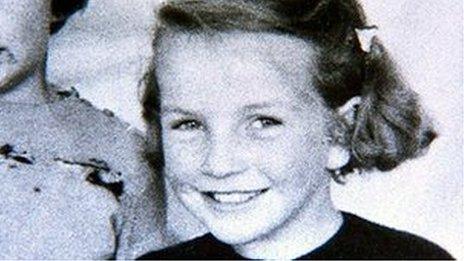
Moira Anderson was last seen by her family on 23 February 1957
Prosecutors believe a convicted child abuser who died in 2006 was responsible for the murder of schoolgirl Moira Anderson in Lanarkshire in 1957.
The 11-year-old was last seen on a bus to Coatbridge, which was driven by Alexander Gartshore.
Following an investigation by its cold case unit and new witnesses coming forward, the Crown Office has now said it would have prosecuted Gartshore.
Moira was last seen on 23 February 1957. Her body has never been found.
She had left her home during a snowstorm to run an errand to a local Co-op shop. Moira then boarded a bus driven by Gartshore, who was the last person to see her alive.
Later that year, he was jailed for raping a 17-year-old babysitter.
Prisoner confession
In 1999, convicted child abuser James Gallogley named his former friend Gartshore as Moira's murderer.
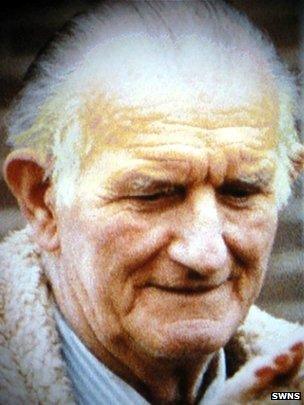
Alexander Gartshore was the last person to see Moira Anderson alive
Gallogley was said to have made the confession to another inmate while he was dying in Peterhead Prison.
After Gartshore's death in 2006, his daughter Sandra Brown, a former friend of Moira, published a book in which she accused her late father of the schoolgirl's murder.
She said she believed Gartshore had initially buried the child's body in a ditch but later moved it to the open grave of an acquaintance, Sinclair Upton, at Old Monkland Cemetery.
An exhumation of the Upton family burial plot in January last year did not find Moira's remains.
Moira's unsolved murder was later reviewed by the Crown Office's cold case unit.
It has now said that had Gartshore been alive it would have brought a murder case against him as the absence of a body is not a barrier to prosecution in Scotland.
The Crown Office outlined the narrative which prosecutors would have presented in any trial.
This would have proceeded from the viewpoint that Moira Anderson had no reason to run away and it would be "a reasonable inference" that she had come to harm.
'Incriminating statements'
After leaving her grandmother's house, Moira boarded a Baxter's bus that was driven by Gartshore.
He admitted to family and police officers that he had seen her on the bus and that he was the last person to see her alive.
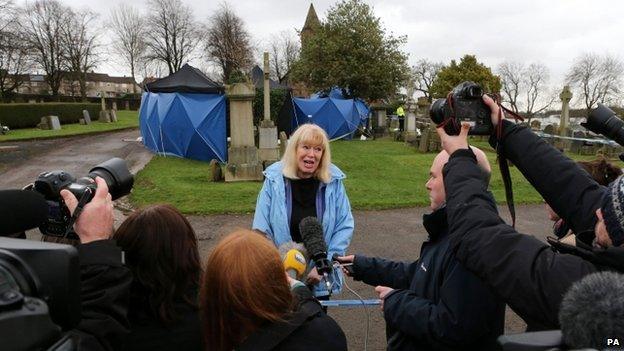
Gartshore's daughter Sandra Brown had accused him of being Moira's killer
Prosecutors would have said Gartshore had an interest in young girls - a fact illustrated by his subsequently conviction for sexually abusing a teenage girl.
They would also have cited conversations with his family where he admitted being sexually attracted to young girls and to being attracted to Moira Anderson.
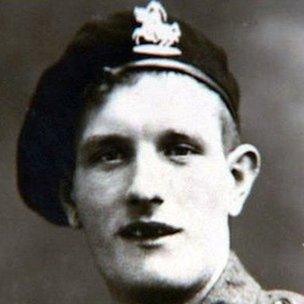
Alexander Gartshore was working as a bus driver when Moira disappeared
Conversations with family, and interviews with police officers, would also have been brought before the jury to show that Gartshore made "contradictory and incriminating statements".
Among these would be a statement where he said he knew that Moira was missing at a time before she was treated as a missing person.
The Crown Office also said that a new witness had come forward, stating that Gartshore exposed himself to her and Moira in a local park in the summer of 1956.
The witness said Gartshore knew Moira by name when calling her over to him.
A further new witness also came forward who saw a man dragging a young girl by the arms at a place near a bus terminus in Carnbroe, Coatbridge.
This was said to have happened on 23 February 1957 - the day Moira was last seen alive.
The description of the young girl matched the description of Moira Anderson.
The witness also identified Gartshore as the man she had seen dragging the young girl.
Prosecutors said the witness had given an explanation for not coming forward earlier "which is considered to be credible" and had "not read any of the books or literature written on the disappearance of Moira Anderson".
The Crown Office said the new evidence provided "the sufficiency of evidence" needed to allow a prosecution against Gartshore if he had still been alive.
Responding to the development, Lord Advocate Frank Mulholland QC said: "This will hopefully bring closure to the family of Moira Anderson, who have had to wait more than half a century for answers."
He added: "We are not saying that the suspect is guilty, only that there is sufficient credible and reliable evidence to indict him and there would be a reasonable prospect of conviction had he still been alive.
"It was only after serious consideration of the circumstances of this case that it was decided to place this information in the public domain."
Det Ch Insp Pat Campbell, of Police Scotland, said he hoped the development would offer "some solace to the family and friends of Moira Anderson".
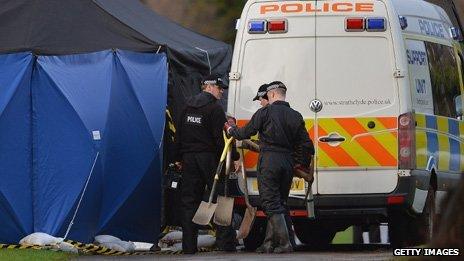
Forensic officers did not find Moira's body while exhuming a grave at Old Monkland Cemetery in January 2013
"Despite the passage of time, she has never been forgotten," he said.
"Unfortunately, the whereabouts of Moira remain unknown and I would like to take this opportunity to appeal to people again, if you have any additional information which could help us find Moira, please do pass it on."
The Crown Office statement was also welcomed by the Moira Anderson Foundation - a charity founded by Gartshore's daughter Sandra Brown to support those affected by childhood sexual abuse.
In a statement, the charity said: "This landmark decision by the Scottish Crown Office is welcomed by the foundation, and underlines the importance of the work we do providing support for families dealing with the trauma of child sexual abuse."
It added: "Giving young people information, in our view, is the best way to help keep them safe, and this is Moira's legacy."
- Published31 January 2014
- Published8 March 2013
- Published9 January 2013
- Published8 January 2013
- Published8 January 2013
- Published14 December 2012
- Published15 November 2012